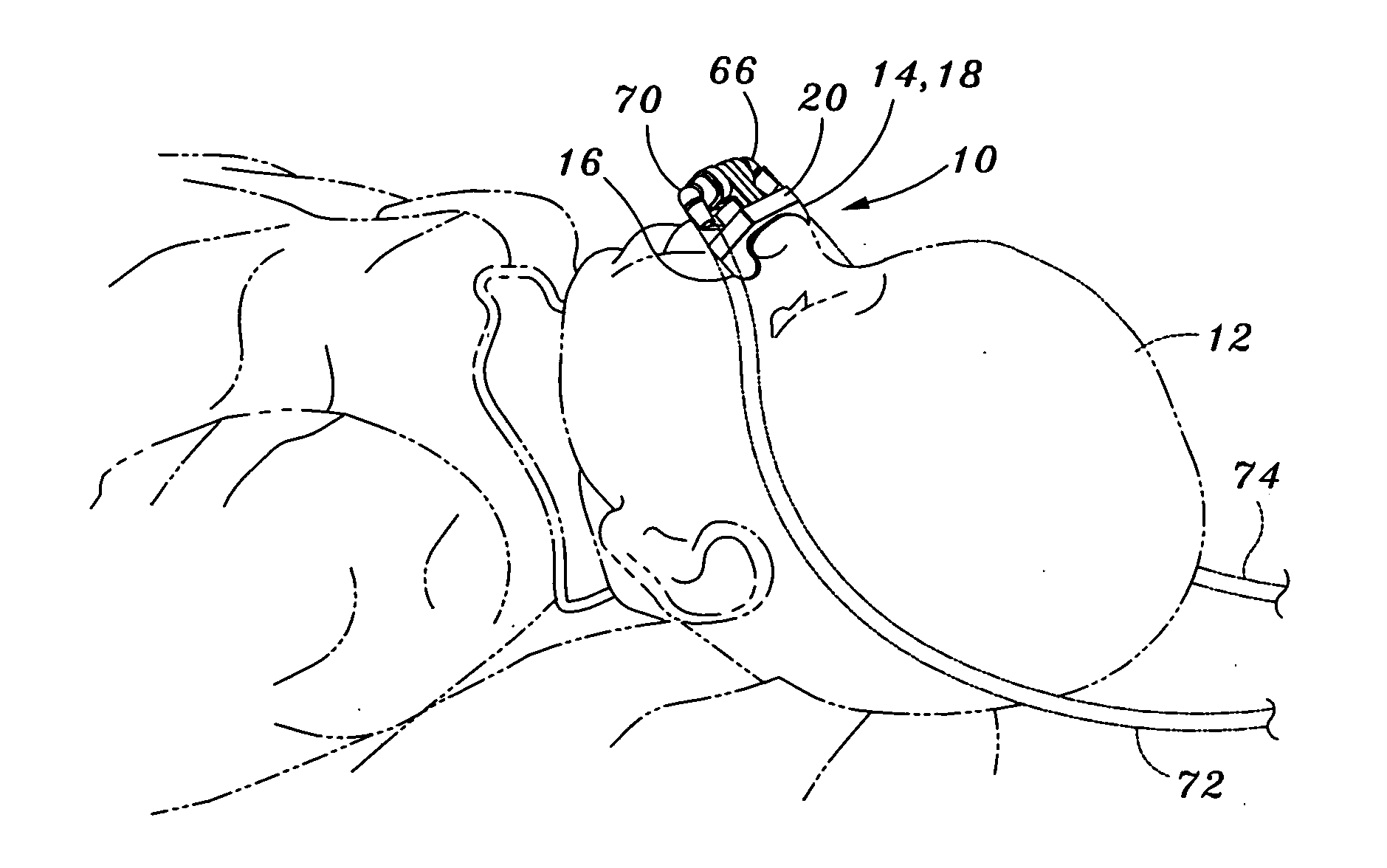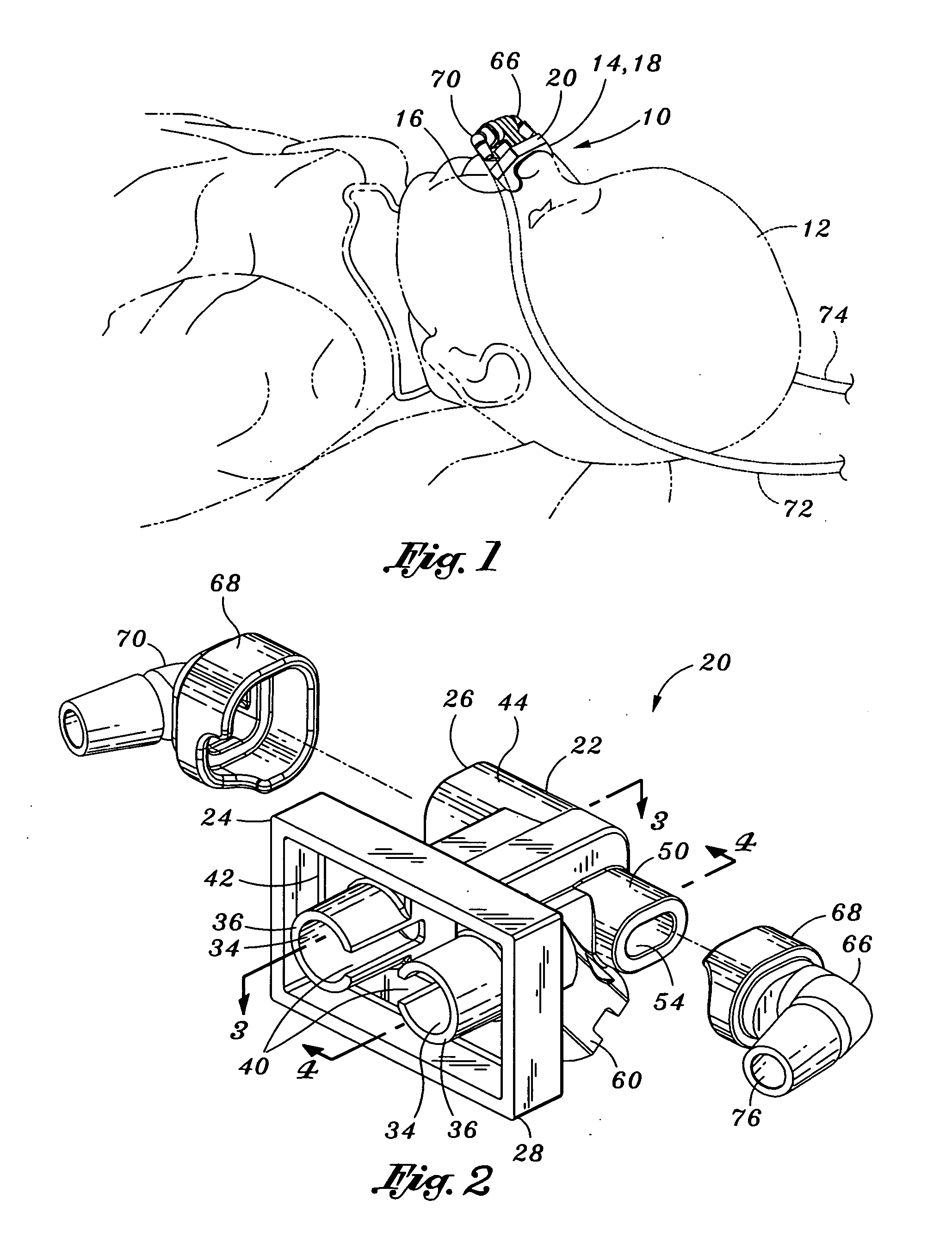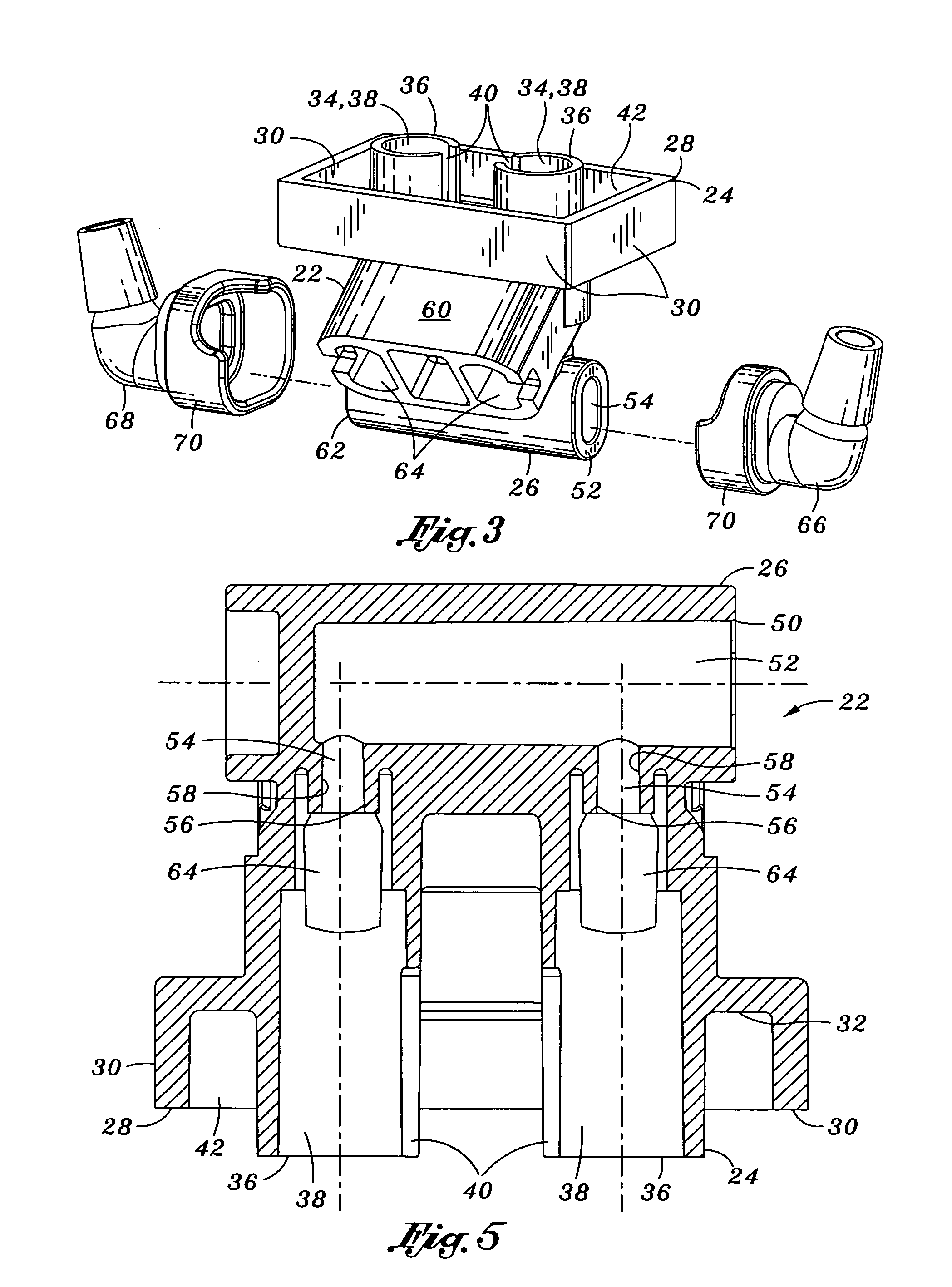Venturi geometry design for flow-generator patient circuit
a flow generator and flow geometry technology, applied in the field of breathing apparatus, can solve the problems of reducing the overall effectiveness and desirability of flow generators, limiting the amount of supply pressure that can be utilized in cpap therapy for certain patients, and requiring excessive supply pressure, so as to achieve efficient inhalation and efficient exhaustion of patient's mouth
- Summary
- Abstract
- Description
- Claims
- Application Information
AI Technical Summary
Benefits of technology
Problems solved by technology
Method used
Image
Examples
Embodiment Construction
[0034] Referring now to the drawings wherein the showings are for purposes of illustrating preferred embodiments of the present invention only, and not for purposes of limiting the same, FIG. 1 perceptively illustrates the universal interface 20 as applied to an infant patient 12. The universal interface 20 includes a pressure tube 72 and a supply tube 74 attached on opposite sides of the universal interface 20 and extending around the patient's 12 head. As was mentioned above, the universal interface 20 of the present invention is specifically adapted to provide continuous positive airway pressure (CPAP) to the patient 12 at a reduced supply pressure when the universal interface 20 is used with a standard ventilator.
[0035] In particular, the universal interface 20 is specifically configured to operate at a pressure no greater than about 120 centimeters (cm) of H2O in order to deliver pressure to the patient of up to about 10 to 15 cm of H2O at a flow rate of up to about 12 liters / ...
PUM
 Login to View More
Login to View More Abstract
Description
Claims
Application Information
 Login to View More
Login to View More - R&D
- Intellectual Property
- Life Sciences
- Materials
- Tech Scout
- Unparalleled Data Quality
- Higher Quality Content
- 60% Fewer Hallucinations
Browse by: Latest US Patents, China's latest patents, Technical Efficacy Thesaurus, Application Domain, Technology Topic, Popular Technical Reports.
© 2025 PatSnap. All rights reserved.Legal|Privacy policy|Modern Slavery Act Transparency Statement|Sitemap|About US| Contact US: help@patsnap.com



